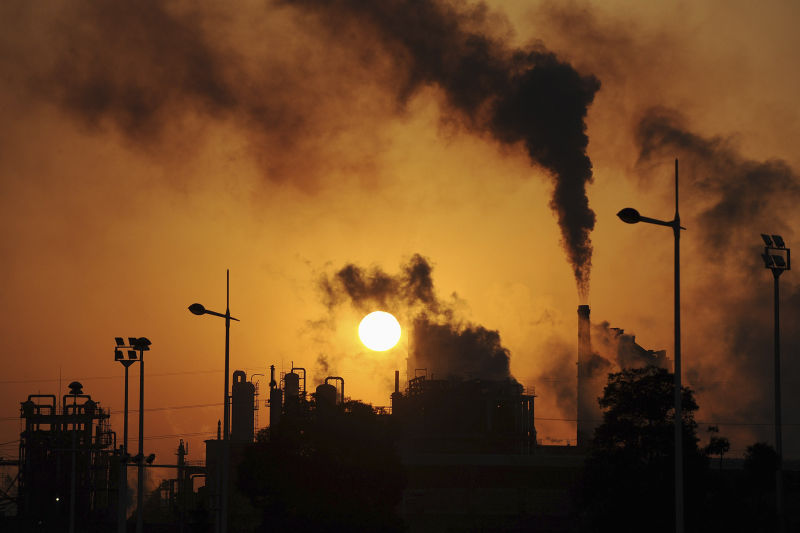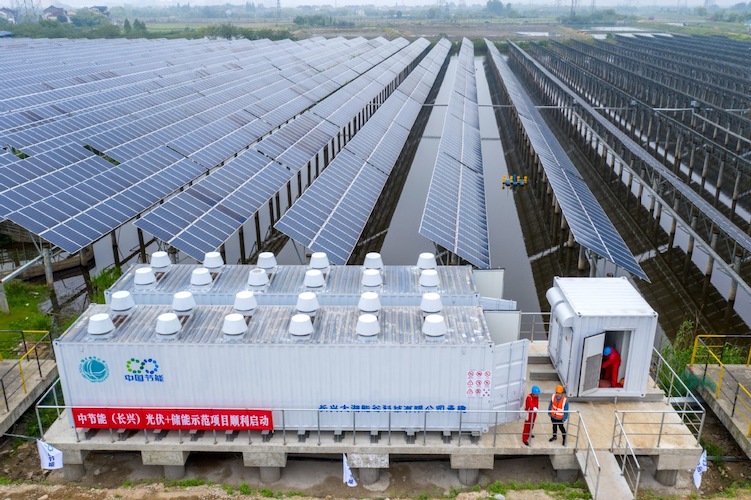China on Friday outlined an ambitious plan to further tamp down on its emissions by the end of the decade, including by setting quotas for key polluting industries and introducing ‘carbon label certification’ on products.
The plan was outlined by China’s cabinet in a notice issued to the country’s provinces and ministries, calling to accelerate “dual control of carbon emissions”.
The ‘dual control’ referred to oversight over both total carbon emissions and emission intensity, which refers to the volume of greenhouse gas emissions per unit of GDP.
Also on AF: China Says July Was Hottest Month Ever Recorded
The plan will apply during the next five-year plan period from 2026 to 2030, the notice by the State Council said. China has set a 2030 deadline to hit peak carbon emissions.
The cabinet plans to incorporate carbon emission indicators, budgets and forecasts into China’s economic plans, and implement those across the country’s provinces and industries that are major sources of pollution.
China aims to establish emission accounting standards, including by evaluating the carbon footprint of individual products and investment projects, and set up a database encapsulating the data by 2025.
From 2026 onwards, it will set its focus on controlling emission intensity across provinces and industries, the State Council said.
Quotas for key industries
A key part of the State Council’s plan involves accounting for emissions from major industries like electricity, steel, petrochemicals, construction and transportation — all of which are major sources of pollution.
Authorities will need to set the stop for carbon accounting in each industry and carry out assessments of their emissions. Industry officials will need to take into account each industry’s energy needs, while comparing them with existing statistics.
The industry-wise carbon budget will also need to account for potential offsets from the emissions trading market, according to the State Council notice.
Authorities will also need to establish a system for constant emissions monitoring, with an aim to issue early warnings to sectors seeing a spike in their emissions, the State Council said.
Early this year, China said it was looking to cut carbon dioxide emissions of key industries by about 1% of the 2023 national total. The power sector accounts for nearly 40% of the country’s total emissions, largely due to its reliance on coal.
A record growth in China’s renewable energy sources, however, suggests the sector may have hit its emissions peak last year.
Quotas for provinces, economic planners
The State Council also called for incorporating carbon emission indicators into economic and social development plans, while accounting for energy security and overall development.
Economic planners will need to formulate action plans for carbon peak and neutrality, and set up “stringent” laws to ensure emissions control and energy savings, it said.
The plan will require each Chinese province to develop their own emissions indicators, accounting for various factors such as their energy needs and existing carbon sinks.
They will also need to create a carbon emission budget, systemic plans to manage that budget, including by conducting annual overviews and forecasts, by 2025. From 2026, provinces will need to begin implementing these budgets.
Economic planners will also need to conduct energy-saving reviews for fixed asset investment projects, while accounting for the environmental impact of construction projects.
Breakneck construction and demolition of buildings in China contributed to almost one-fifth of the country’s total carbon emissions in 2015, according to a study in 2020.
Footprint-tracker for products
The State Council plan also calls for the formulation of standards to determine the ‘carbon footprint’ of all products.
The wider aim of the activity would be establish a product carbon labelling certification system.
While the plan’s many targets are very ambitious, they may be necessary given China is the world’s biggest emitter of greenhouse gases.
The world’s second-biggest economy is also prone to extreme weather resulting from rapid climate change. China has experienced freak weather phenomena throughout this year so far, incurring economic loss worth $12.83 billion already.
And last month was the hottest ever recorded in the country.
Those risks, however, would also make implementing the State Council’s plan challenging for authorities, as record heat has continued to fuel power demand in the country of over 1.4 billion people.
Systemic challenges will also likely impede the plan’s implementation, as graft remains a major cause of concern in China.
An energy law meant to decarbonise the energy sector was delayed by nearly two decades due to staunch resistance from within the industry and only released for public comments earlier this year.
Emissions data fraud also remains a key challenge for China, with authorities vowing to implement tougher penalties on firms at fault.
- Vishakha Saxena
Also read:
Critical China Factory Hubs Face Greatest Climate Change Risk
Study Shows Half of China’s Big Cities Sinking, Rising Seas Risk
China Turns to Carbon Capture, Biomass For Coal Power Emissions
China Misses 2023 Emissions Targets, ‘Climate Credibility at Risk’
Fossil Fuel Phase-Out ‘Unrealistic’, China Climate Chief Warns
China, India Ask Rich Nations For ‘Trillions’ in Climate Finance
China Building More Solar, Wind Than Rest of World Combined
Solar Overcapacity Kills Projects, Fuels Bankruptcies In China
US, EU Can’t Meet Climate Goals Without China’s Cheap Green Tech
Carbon Offsets Mostly ‘Ineffective’, Slow Net Zero Shift – FT
























